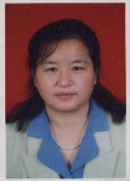Follow me to Practise Taiji
Author: Dr. Lee
Clicks:
Time: 2010/11/20 16:51:12
1.Even Speed
The simplified forms of TaijiQuan described in this book originated mainly from the Yang Style. It calls for even speed. Beginners should do the exercises slowly in all movements in order to appreciate the essentials. They should be done at an even speed from start to finish. As skill develops, increased speed follows. The time needed for this set of Taiji Quan is four to six minutes.
2.Free Choice Between Different Frames
Body height is not a significant factor in practicing Taiji Quan. For young and strong people, the frame should be low. Older and less mobile people may choose the high frame. The height of the whole frame should be decided from the starting form. All but some special movements, like push down and stand on one leg, should be kept at the same height.
3.Connections Between Forms
Taiji Quan exercises must be practiced continuously. Change of forms means the end of the previous form and the beginning of the connecting form. Beginners should avoid pauses or "discontinuation of power" during the connections, but there should be no hasty changes. Taiji Quan exercises and connections of movements are quite natural. Attention should be paid to the parts of the body and the directions of movements. The changes should be both steady and fluid.
4.Single Movements and Routines
Taiji Quan is composed of many single movements and forms. The movements have both generalities and peculiarities. The basis for grasping the whole set of Taiji Quan is to understand the technical requirements of every movement. Therefore, the principal forms (such as Wave Hands like Clouds, Single Whip, Grasp Peacock's Tail) should be practiced repeatedly so as to make them perfect. Practice of the whole set is essential to get a firm grasp of the inherent rules and to strengthen the continuity. Ideally, the principal forms and unfamiliar movements should be practiced three to five times, then the whole set once or twice every day. Of course, the more often you practice, the better.
5.Inherent Awaneness
Taiji Quan is a sport combining form and mind. According to boxing theory. "Form is the body, mind is the application." Expressed in a common metaphor, form is the glass, mind is the wine filling it. Without wine, there is nothing in the glass. Beginners should first get to know the special features of using the mind in the whole set of Taiji Quan, that is, naturalness without overstress on the mind, but not looseness. Second, beginners should understand the purpose of every form and every movement and combine mind with form during practice. For example, in dong the exercise of Crane Spreads Its Wings, beginners should imitate a white crane in its perching posture in the eternal form and, at the same time, imagine the gentleness and liveliness of the bird. In this way, they will gradually deepen their understanding of the concept of Taiji Quan.
6.How to Handle Contradictions
"Taiji" is a harmonious method of balance. Taiji Quan skillfully handles the different pairs of opposites in the movement and thus achieves a high degree of unity. For example, advance and retreat, left and right, is always "retreat first when you intend to advance" and "first right when you mean left," so that retreat is advance and left is right. Take relaxation and uprightness as another example: you have to be sure that there is uprightness in looseness and there is looseness in uprightness. When it is upright, it is not tight; when it is loose, it is not lax. The third example is the relationship between bent and straight. All movements in Taiji Quan are curved movements and should not be restrained. The joints should not be bent too much, this means that "there is straightness in the bend." Understanding the methods of handling the contradictions in Taiji Quan is practice in combining its theory and techniques.
7.Basic Skills not to Be Neglected
The hand forms, stances and footwork changes are the basic skills used in all movements from beginning to end. Therefore, these basic skills must be practiced often. Every hand form or stance is related to the whole movement. They are often the "center of balance" when a movement is completed. Changes in footwork embody the "empty and solid" relations of Taiji Quan and they are the transitional connections from the individual parts to the whole. When footwork changes nimbly, the body movements become light, and the feet become so firm they seem "rooted." If the footwork is heavy, it is difficult to practice Taiji Quan well. Regular and diligent practice of the basic skills, is essential to mastery of Taiji Quan.

